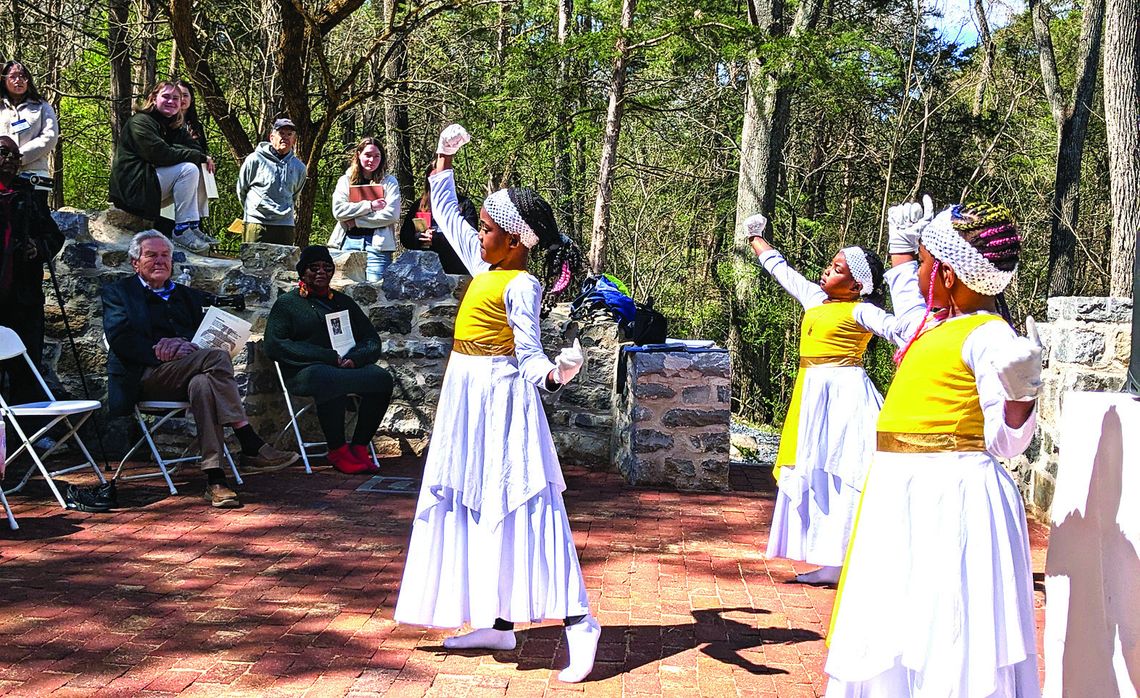W&L, Community Celebrate ‘The Foundation’
Heading west on U.S. 60, it is hard to miss the large and imposing stone walls just west of the ball fields on Washington and Lee University’s back campus. These walls are all that remain of Liberty Hall Academy, a precursor to W&L.
Just to the right of the stone ruins is a gravel path leading down to the house where the Liberty Hall students would have taken their meals, the old Steward’s House.
The once forgotten structure received some long overdue attention at the “Gathering of the Foundation” earlier this month. The event, organized by members of Alison Bell’s Collective Memory Class at W&L, brought to light not only the history of the house but also the land as a whole, from its time as the home of the Monacans and their forebears, to academia, to agriculture and back to school again.
“Our aim today is to respectfully acknowledge the layered history of this landscape,” Bell said in her opening remarks at the gathering.
For centuries the land had been inhabited by the Yesa people and later by the Monacans. The land was particularly attractive because of its temperate climate and its close proximity to a spring.
“As the Monacans say, water is life,” Bell said.
“They were the stewards of the land,” said W&L student PT Meadors of the Yesas and the Monacans. “Before the foundation was even erected, this was indigenous land. People came together, families shared meals and worked and enjoyed the natural splendor.”
Eventually surveyors developed a system of tracts on Monacan-occupied land that were purchased by colonists. The profits helped with the national debt that was incurred following the Revolutionary War.
“Land dispossession across Native America by the founders and colonizers led to the financial booms that would enable individual like [George] Washington to donate his stock in the Potomac River Company to the academy that would eventually become [W&L],” Meadors said.
“It is with deep gratitude that I recognize the original and current caretakers of this land, water and air,” said Kelly Fujiwara of W&L’s Native American and Indigenous Cohort in her remarks regarding the original occupants of the land and the ones who live there today. She also read the poem “Dancing to the Stars” by Karenne Wood.
Liberty Hall had its beginnings in a small Presbyterian school at Timber Ridge established in 1774 and managed by the Rev. William Graham. By the close of the decade, most of the students were fighting in the Revolutionary War and the school went bust. The few students who remained received instruction in Graham’s home at Mulberry Hill west of Lexington. This was the first site of Liberty Hall Academy.
It wasn’t until 1782 that Liberty Hall moved further west on land belonging to the Rev. Graham and two other men. The first academic buildings were made of wood, but in 1793 Rockingham County mason William Cravens was hired by the trustees to construct a large three-story stone facility with student quarters, office space, a library and classrooms. Latin, Greek, arithmetic, Algebra, geography, logic and natural philosophy courses were in the core curriculum.
Cravens also built the steward’s house where the students were served three meals a day.
“One of the most poignant aspects of their education was, surprisingly, their mealtimes,” said student Natalie Eger. “Bearing the legacy of Scottish, Irish and German immigrants that lived opposite the mountains to the Anglican, higher class eastern side of the state, the institution stressed the ideal of simplicity common of the Presbyterian tradition.”
The men of Liberty Academy were served very plain fare, mostly bread, meat and vegetables. Beverages included tea, coffee or chocolate.
It would have been the duty of the steward’s slaves to serve the students. The enslaved individuals would have been in charge of growing the food, tending the crops and chopping wood for the fire as well.
“The stone academy house served as dormitory and educational purposes for only 10 years,” said student Abby Kim in the historical overview of the academy. “Trustees obtained fire insurance for it in November of 1802, and it was declared a loss to fire in January of 1803. When the academy house burned and the institution moved to its current location, the steward’s house became part of the Andrew Alexander plantation.”
Alexander exchanged his land where present-day W&L is situated for the Liberty Hall land. The former campus became vast farmland where Alexander’s many slaves would have worked. Alexander had his own slaves, but when the father of his wife, Anne Dandridge Aylett, died, he left his slaves to her. At one time Alexander and his son, Aylett, were the only two white people on the property. By the time of the outbreak of the Civil War, there were 61 enslaved people working on the plantation.
The steward’s house would have been used to house the slaves.
“I hope that as this space is reintroduced into our campus, we can recognize its memory not just in this particular story, but also in the layers that surround it,” said Abby Kim.
Rediscovery
In the mid-1970s, the country was gearing up for its bicentennial. W&L went in search of its past at the former Liberty Hall site in a series of archeological digs. The old Steward’s House had disappeared from memory, having been completely reclaimed by nature.
Abby Kim described it as “basically a pile of dilapidated stones, overgrown and disintegrating into the soil, stuck behind a parking lot and fading into the forest floor.”
In 2022, W&L’s Historic Preservation and Archeological Advisory Board recommended that the Steward’s House be partially restored. To accomplish this, stonemasons John Friedrichs, Jesse Friedrichs and Matt Reed of New Dimension Masonry were hired.
They worked in all kinds of weather for 22 weeks restoring the Steward’s House to its appearance when it was uncovered in the 1970s using 70 tons of stone, 18 tons of sand from the Maury River, 140 bags of mortar, 1000 gallons of water, 3,000 handmade bricks and 2,500 hours of labor.
At the conclusion of the gathering, three girls from DaHumble Beez Praise Dance Team of Roanoke performed a routine to the song “Break Every Chain” by American gospel musician Tasha Cobbs Leonard, dancing freely on land where so many enslaved Africans once worked. Their director, Sharon Robinson, was present at the event. It was John Friedrich’s idea to use the shape of Robinson’s feet for the footprints pressed into the limestone by the hearth of the Steward’s House.
Alison Bell sincerely hopes that the Steward’s House will serve as an outdoor classroom inspiring those who gather there to embrace their creativity for years to come.
“My students and I chose to call this the Foundation as neutral and hopefully thought-provoking term. How is it foundational to the university, the local community, the country? How can we understand its past not as either or but both and more?”
Bell’s student PT Meadors echoed his professor’s sentiment. “Let us bear witness to those that came before and care for the space to be shared into the future.”
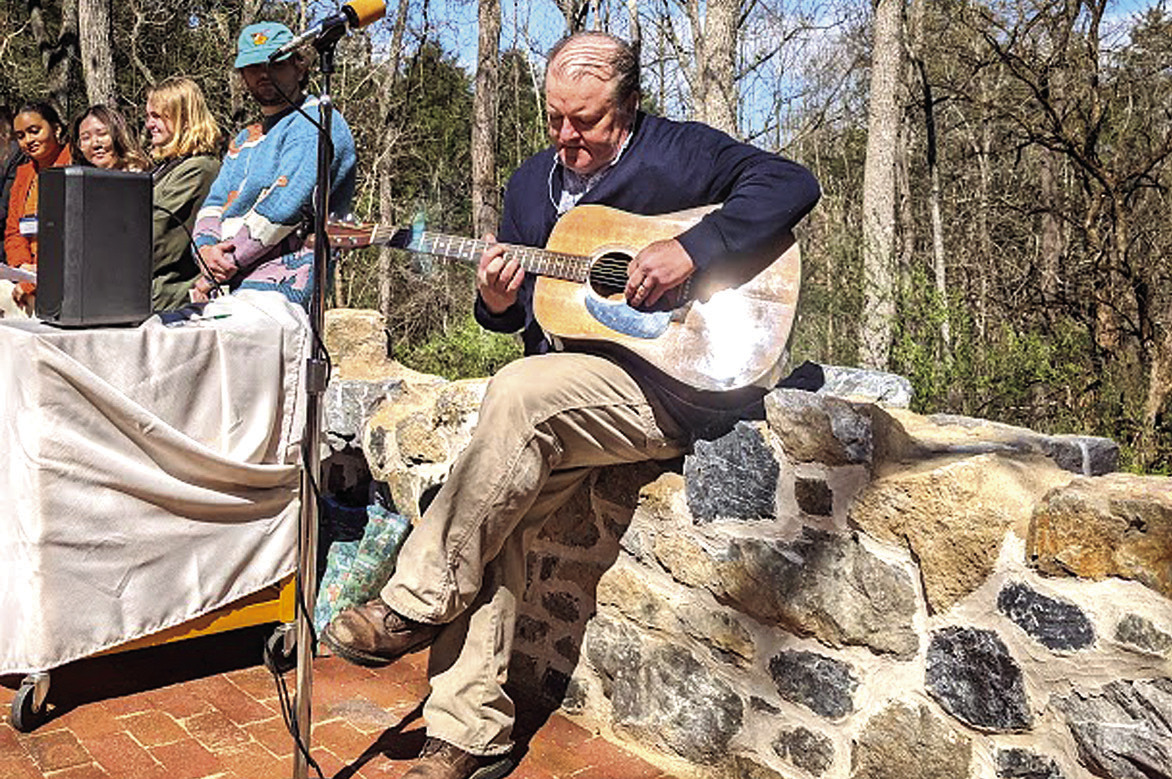
DON GAYLORD, W&L research archaeologist, performs the song “Blackbird” by the Beatles. Gaylord has been one of the driving forces keeping the Steward House restoration project going. (Joann Ware photo)
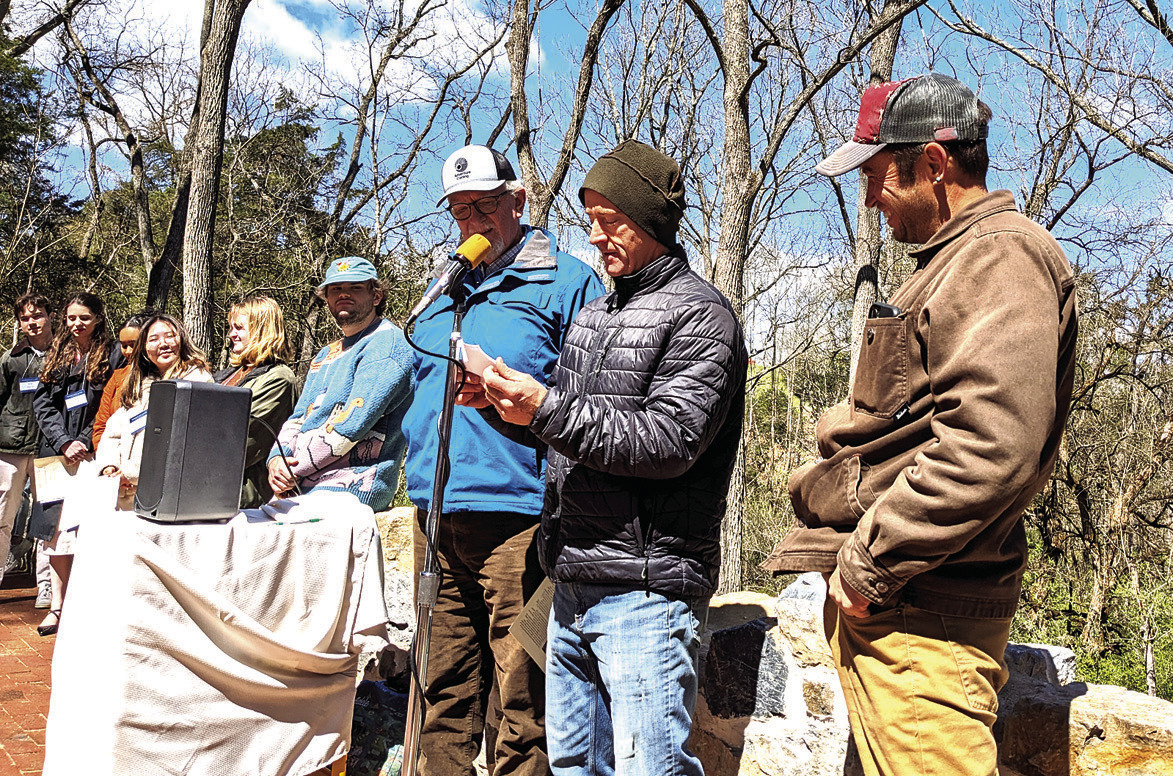
JOHN FRIEDRICHS, Matt Reed and Jesse Friedrichs of New Dimension Masonry completed the Steward’s House restoration project in 22 weeks. “It took an incredible amount of team work,” John Friedrichs said in his remarks. (Joann Ware photo)
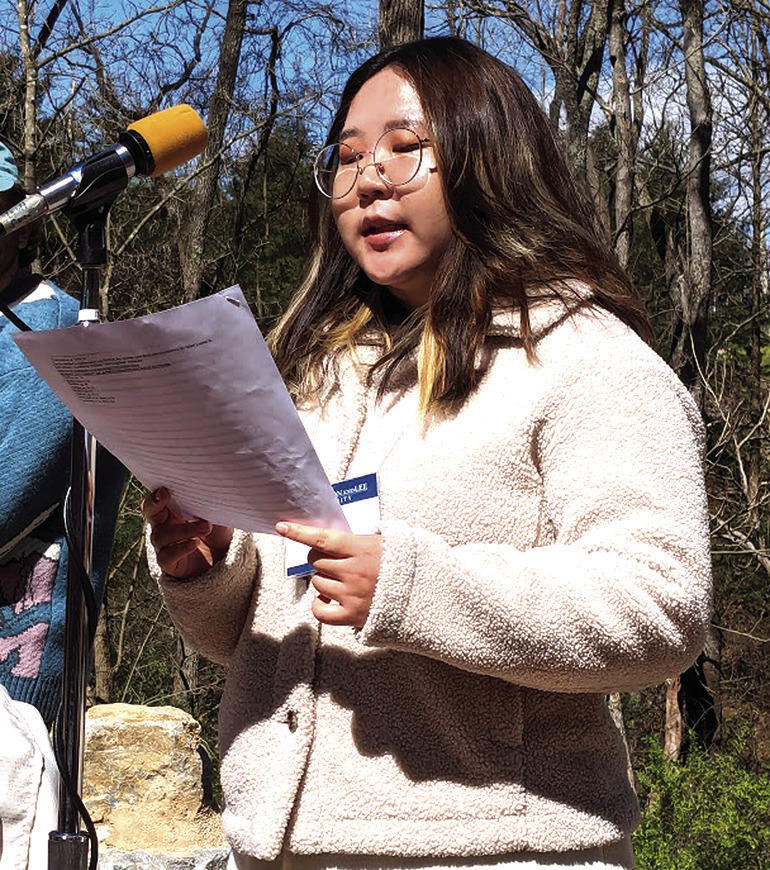
ABBY KIM of Alison Bell’s Collective Memory class gives an overview of the history of Liberty Hall Academy. “Standing here, I can’t help but be stunned at how we have reclaimed the memory of this space,” she said during her remarks. (Joann Ware photo)
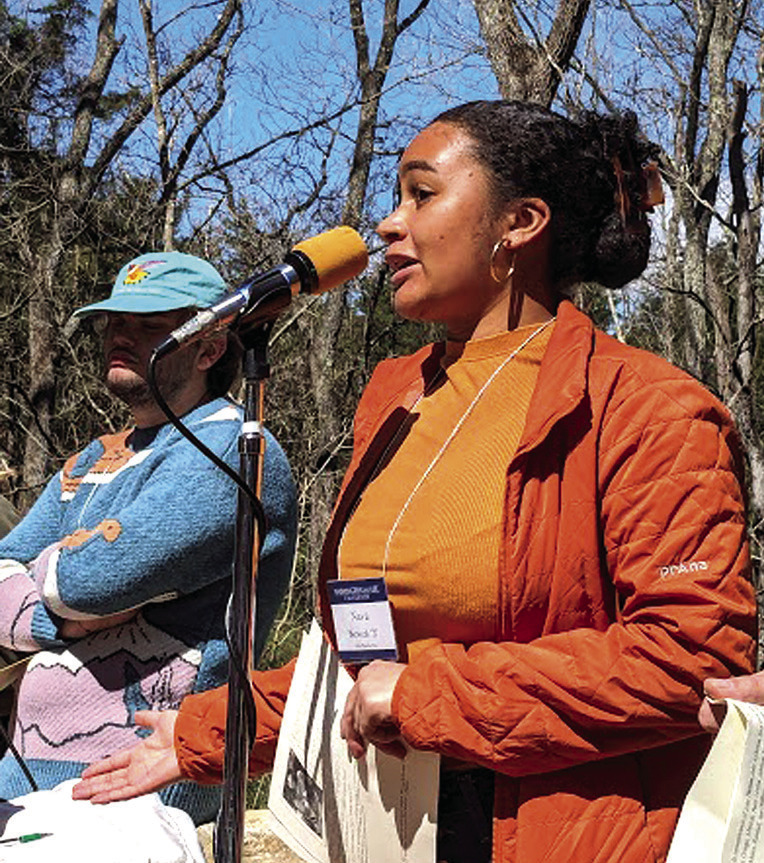
W&L STUDENT Nava Berwick reads a list of the names of the people enslaved on the land that once was the campus of Liberty Hall Academy. After the main building burned in January 1803, it became a plantation. (Joann Ware photo)
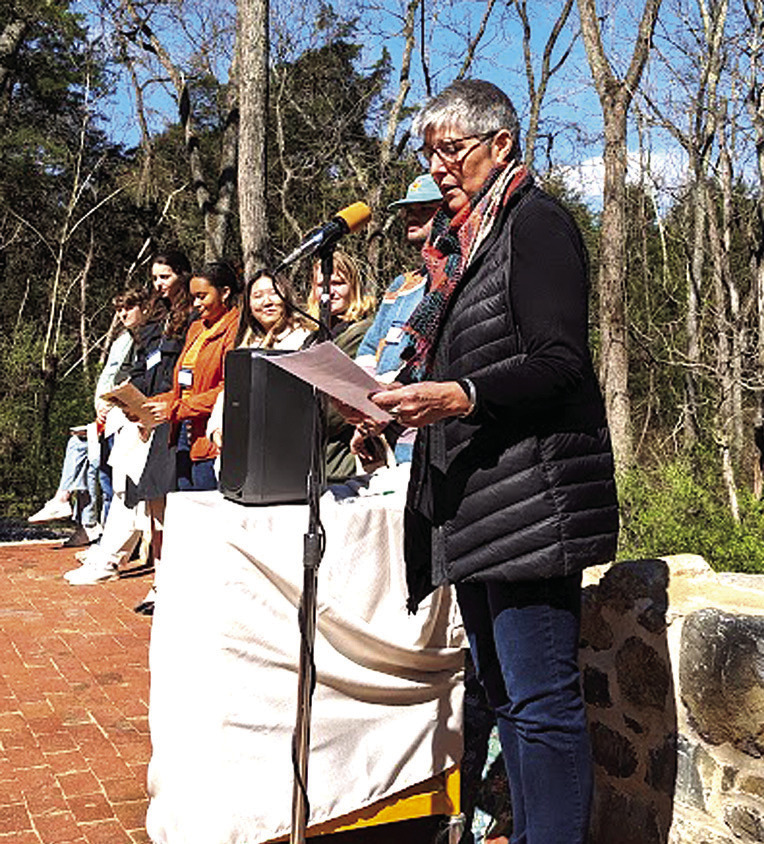
KELLYFUJIWARAoftheW&LNativeAmericanandIndigenous Cohort reads the poem “Dancing the Stars” by Karenne Wood. (Joann Ware photo)
.jpg)
